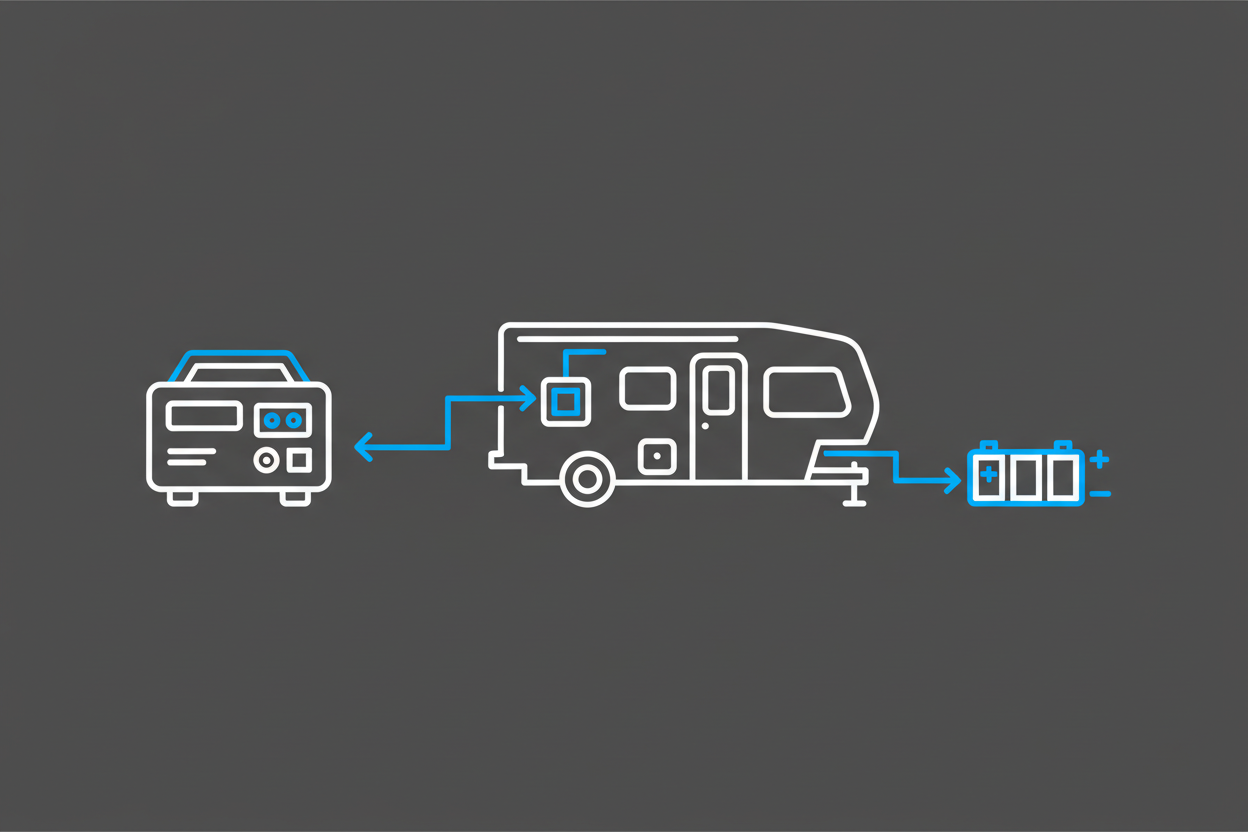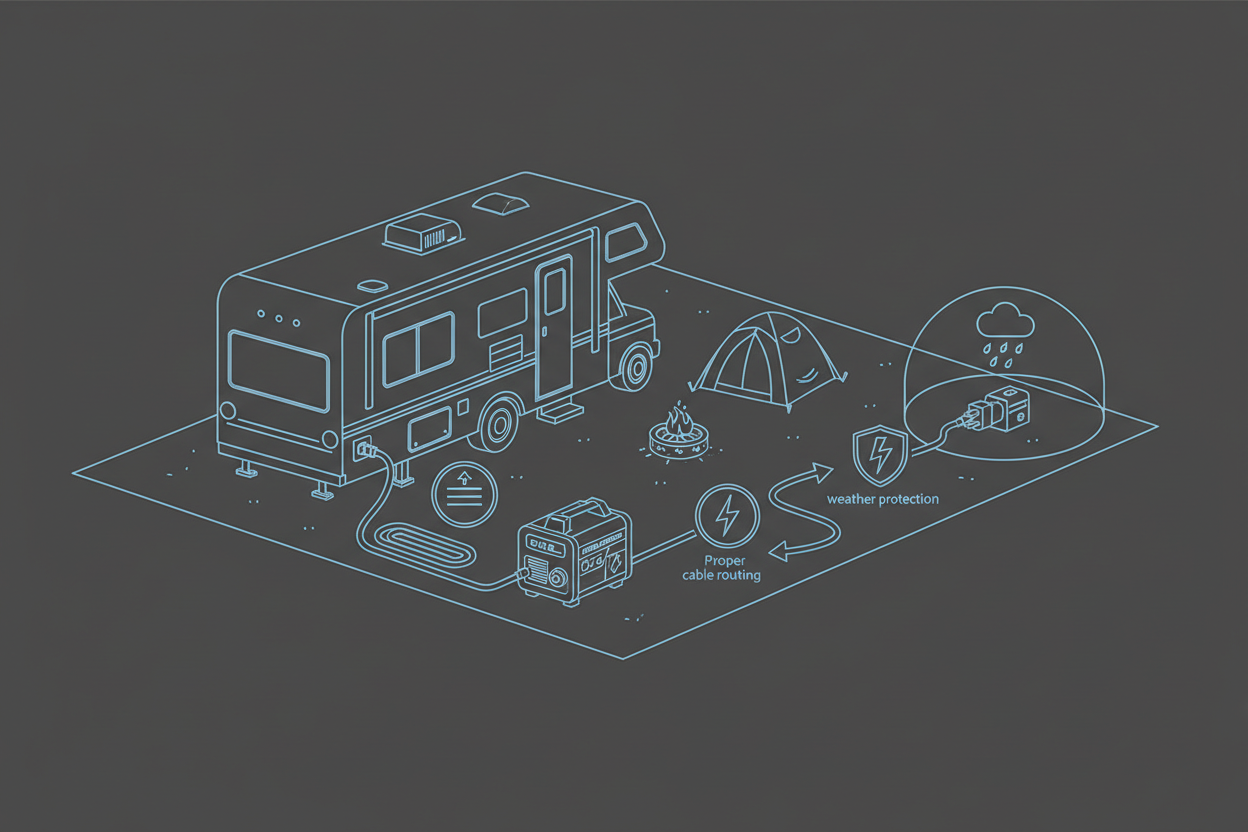RV Generator Guide
RV Generator Guide
RV travel demands stable, quiet, and efficient power. The right RV generator can run your air conditioner, charge batteries, and keep electronics safe without upsetting campground neighbors. This guide explains how RV generators work, how to size them, and how to use them confidently on the road.
Use this page as your hub, then explore the A1–A20 articles for wattage planning, AC compatibility, boondocking strategy, fuel options, and maintenance.
RV Generator Basics
Every RV power setup starts with understanding how much power you use and how it flows through your rig. Some RVs rely mostly on shore power, while others split usage between batteries, solar, and a generator.
For a plain language overview of what an RV generator does in your system, start with A1. RV Generator Basics: What an RV Generator Does .
Power Needs and Sizing
Correct sizing is about matching generator output to your real RV loads. You need enough running watts for everything you plan to power together, plus starting surge for motors.
Begin by understanding overall demand in A2. RV Generator Power Requirements: Understanding Your RV’s Needs and more detailed appliance breakdowns in A3. RV Generator Wattage Requirements: How Much Power Do You Really Need? .
Once you know your wattage, compare common size classes in A4. Best RV Generator Size for Travel Trailers and Motorhomes .
Air Conditioner and Heavy Loads
Air conditioners are usually the largest load in an RV. Many RVers choose generator size mainly around starting and running their roof AC.
Learn how AC BTU ratings, soft start kits, and generator wattage fit together in A5. RV AC Compatibility: What Generator Size You Need .
For a practical walkthrough of running your AC day to day, see A19. Running an RV Air Conditioner With a Generator: What You Need to Know .
Campground Power and Connections
Safe connections protect your RV and campground power system. Understanding 30A vs 50A service, adapters, and cord sizing helps avoid tripped breakers and hot plugs.
Review plug types and adapter setups in A9. RV 30A/50A Connections Explained .
For a complete walkthrough of cords, adapters, and grounding practices, read A18. How to Safely Connect an RV to a Generator: Cords, Adapters, and Grounding .
Boondocking, Batteries, and Off-Grid Use
Many RV owners use generators primarily when boondocking. In that case, your generator supports both direct AC loads and battery charging for inverters and 12V systems.
Learn how to build a quiet, efficient off-grid routine in A12. Boondocking Generator Strategy: Quiet Power Off-Grid .
For battery charging specifics, including charge rates and scheduling, see A11. How to Charge RV Batteries With a Generator .
If you want more flexibility or redundancy, consider running A10. Parallel Generators for RVs: More Power Without More Noise .
Fuel Options, Runtime, and Noise
Fuel type, runtime, and sound levels all shape your day to day RV experience. Long runtime reduces refueling stops, while low noise protects your comfort and your neighbors.
Start with fuel choices and tradeoffs in A8. RV Generator Fuel Options: Gasoline, Propane, and More .
For planning overnight runs and long travel days, use A13. RV Generator Runtime Guide: How Long Will It Run? .
To better understand what “quiet” really means at the campsite, read A7. RV Generator Noise Levels: What “Quiet” Really Means .
High Elevation and Cold Weather
Elevation and temperature can change generator performance. Thin air reduces available power, and cold weather affects starting and fuel behavior.
For high mountain travel, see A14. RV Generator Performance at High Elevation: What Changes Above 3,000 ft? .
For winter trips and storage in cold climates, use A4. RV Generator Use in Winter: Cold Weather Operation and Preparation .
Safety, Storage, and Maintenance
Safe operation protects your RV, your family, and neighbors. Generators must run outdoors with proper exhaust direction and clear airflow. Regular maintenance keeps them ready for travel season.
Learn the essentials for CO, fire, and electrical protection in A16. RV Generator Safety Guide: CO, Fire, and Electrical Protection .
Build a maintenance routine with A17. RV Generator Maintenance Checklist: Keep Your Inverter Running Smoothly .
For storage tips between trips and safe transport on the road, read A15. RV Generator Storage and Transport: How to Protect Your Equipment .
Choosing the Right RV Generator
Once you understand your loads, travel style, and campsite mix, you can narrow your generator options with confidence. The best RV generator balances wattage, noise, runtime, fuel choice, and portability.
For a structured buyer’s walkthrough that ties all of these factors together, see A20. How to Choose the Right RV Generator: A Practical Buyer’s Guide .
RV Generator Article Library (A1–A20)
Use this library to explore specific RV generator questions in more detail. Each article focuses on a real world scenario you will encounter on the road.
- A1. RV Generator Basics: What an RV Generator Does
- A2. RV Generator Power Requirements: Understanding Your RV’s Needs
- A3. RV Generator Wattage Requirements: How Much Power Do You Really Need?
- A4. Best RV Generator Size for Travel Trailers and Motorhomes
- A5. RV AC Compatibility: What Generator Size You Need
- A6. RV Generator Noise Levels: What “Quiet” Really Means
- A7. RV Generator Fuel Options: Gasoline, Propane, and More
- A8. RV Generator Runtime Guide: How Long Will It Run?
- A9. RV 30A/50A Connections Explained
- A10. Parallel Generators for RVs: More Power Without More Noise
- A11. How to Charge RV Batteries With a Generator
- A12. Boondocking Generator Strategy: Quiet Power Off-Grid
- A13. RV Generator Performance at High Elevation: What Changes Above 3,000 ft?
- A14. RV Generator Use in Winter: Cold Weather Operation and Preparation
- A15. RV Generator Storage and Transport: How to Protect Your Equipment
- A16. RV Generator Safety Guide: CO, Fire, and Electrical Protection
- A17. RV Generator Maintenance Checklist: Keep Your Inverter Running Smoothly
- A18. How to Safely Connect an RV to a Generator: Cords, Adapters, and Grounding
- A19. Running an RV Air Conditioner With a Generator: What You Need to Know
- A20. How to Choose the Right RV Generator: A Practical Buyer’s Guide
Related Generator Guides
Explore more generator topics across our complete guide system:
Recommended RV Generators

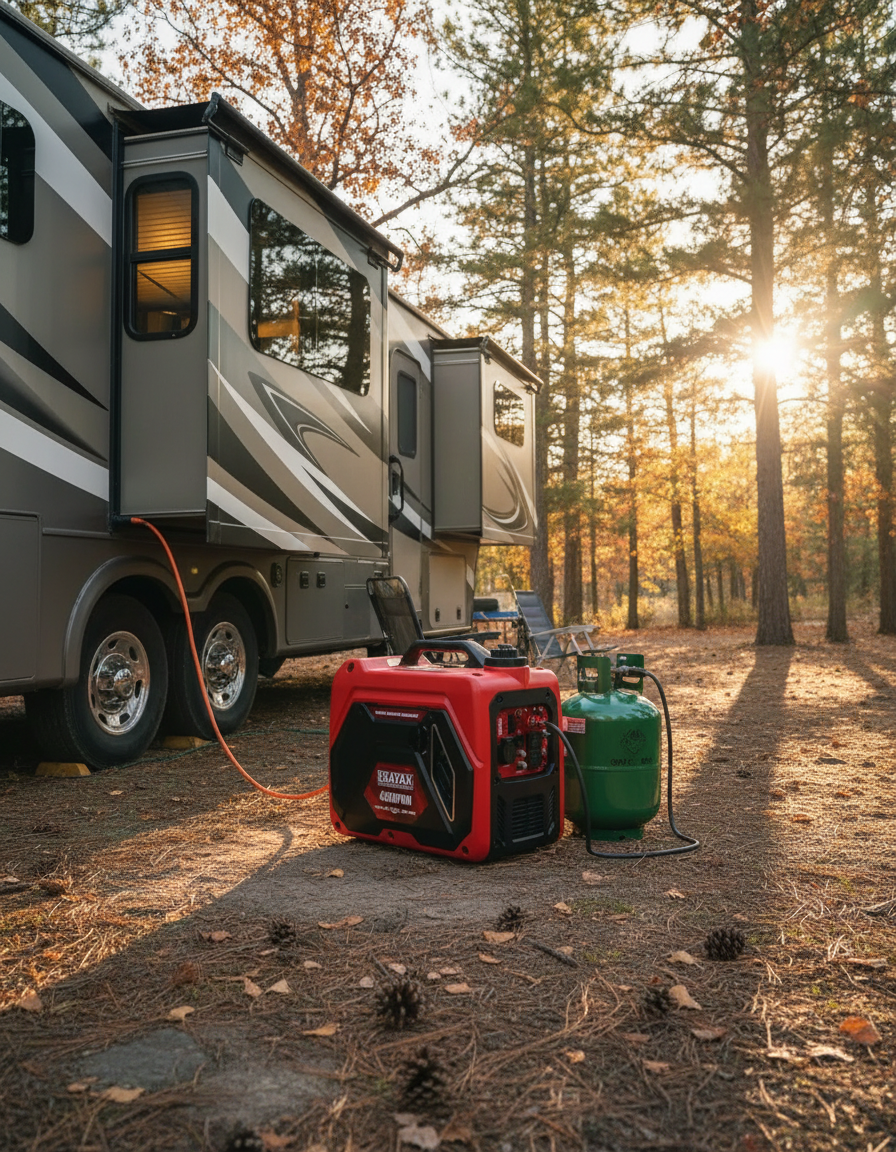
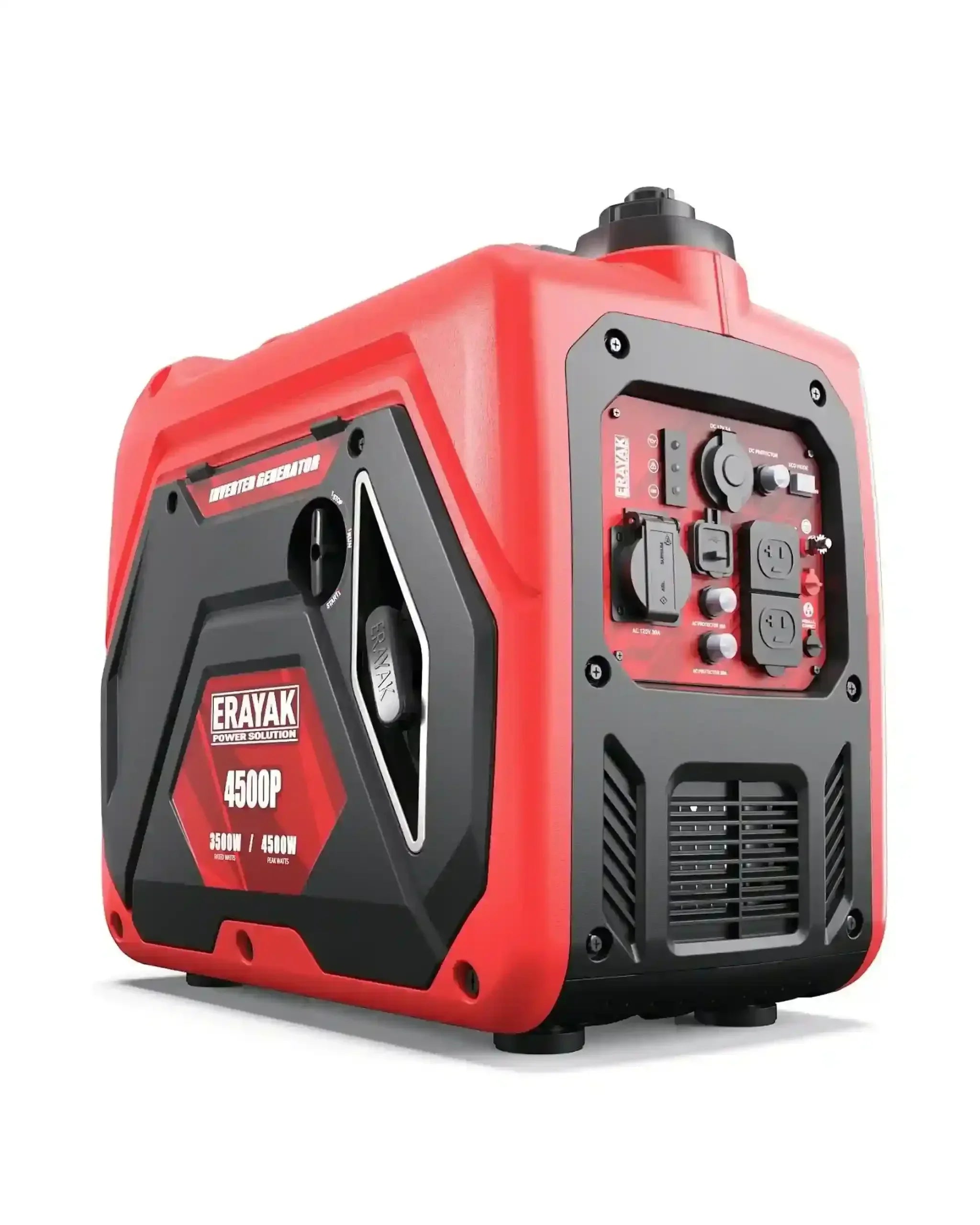
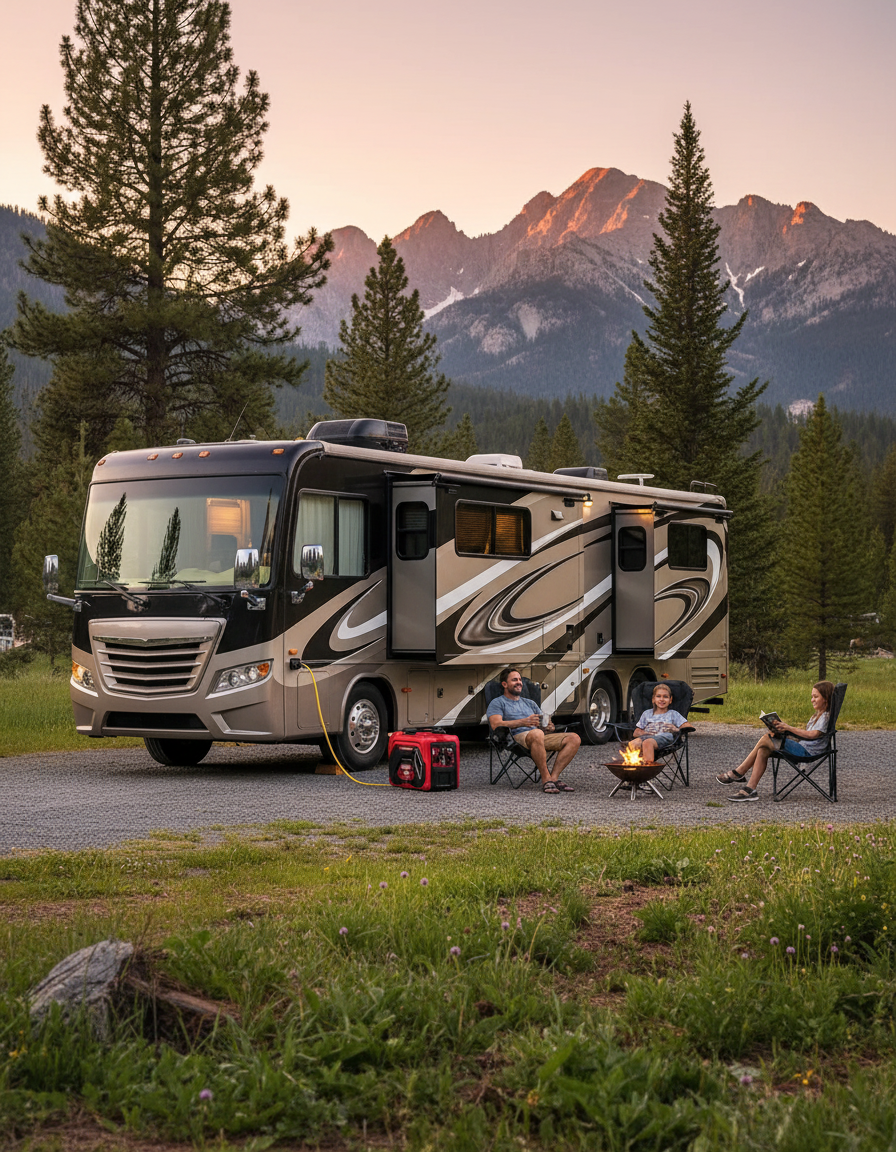


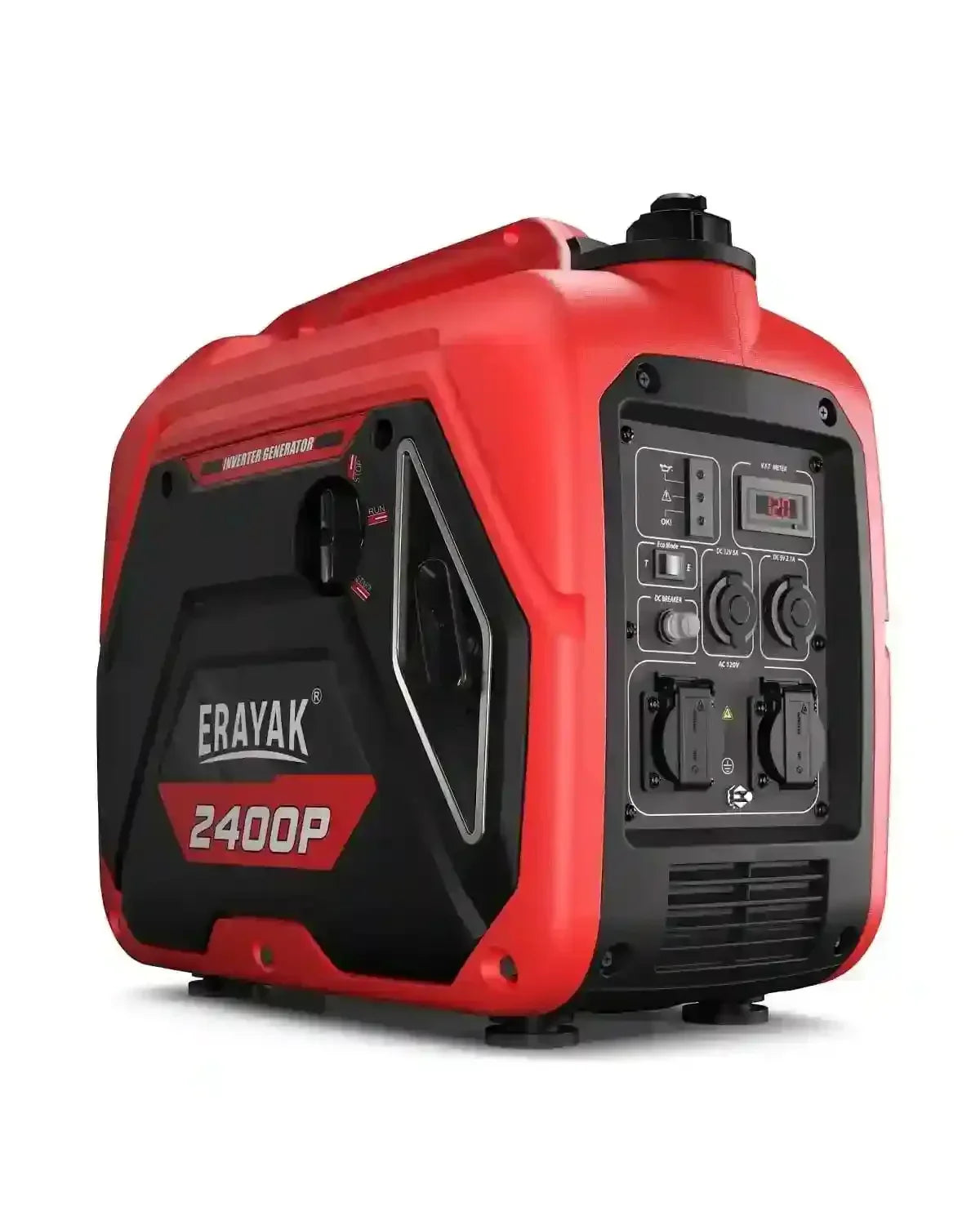
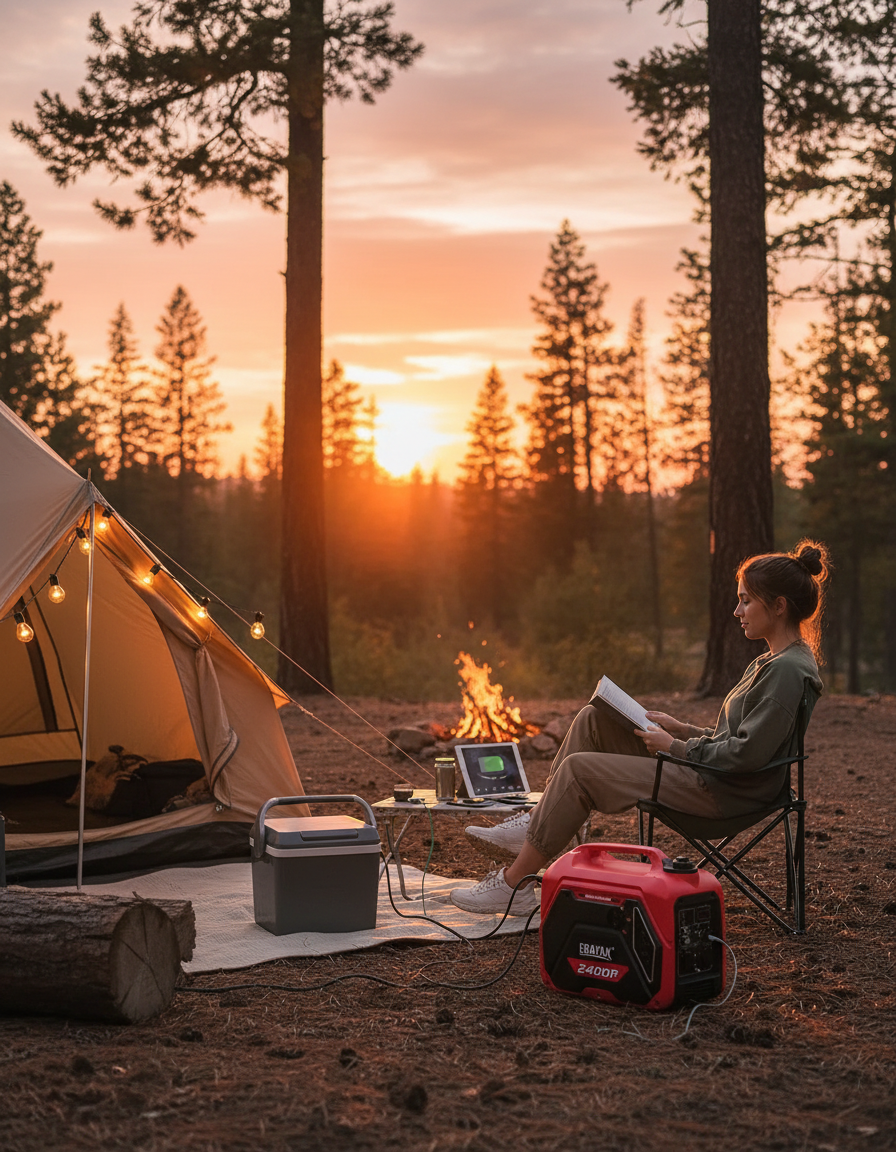
Learn More About RV Generators
View all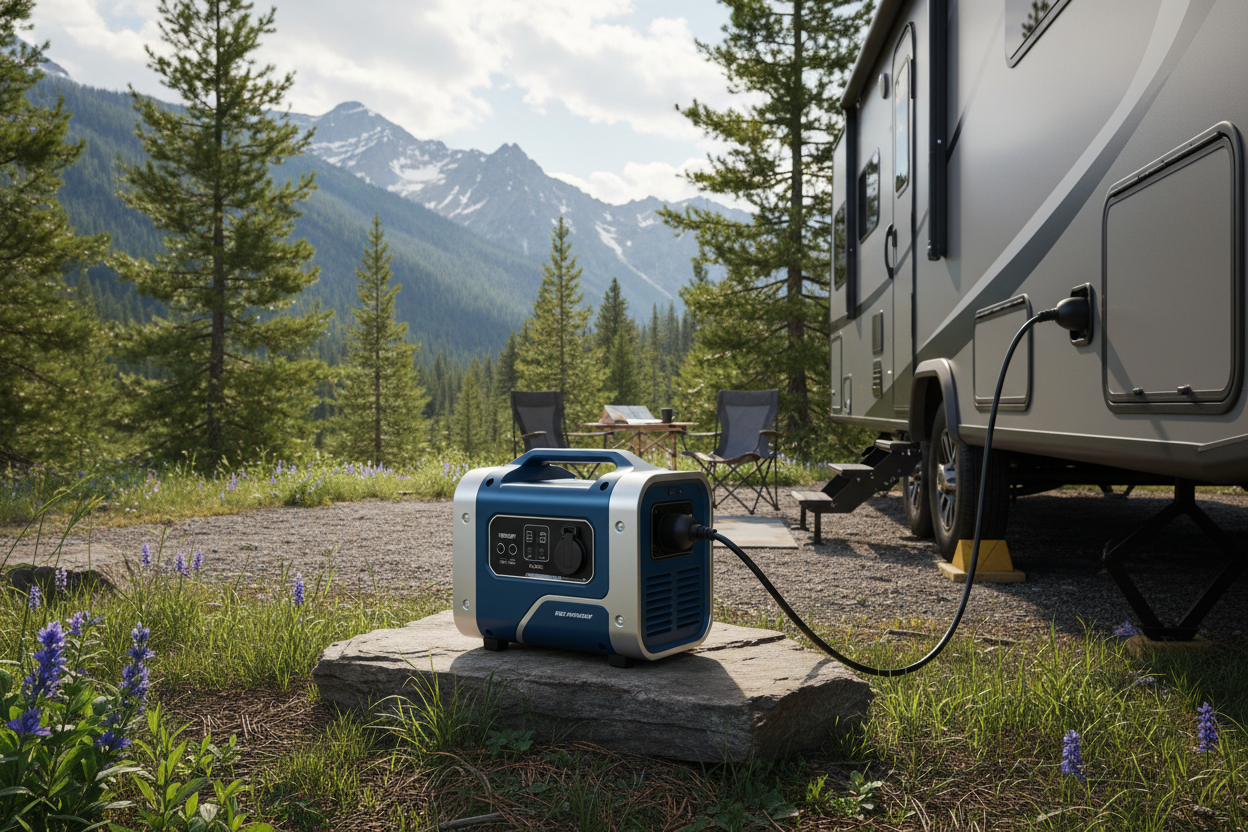
Best Generator for RV 30 Amp
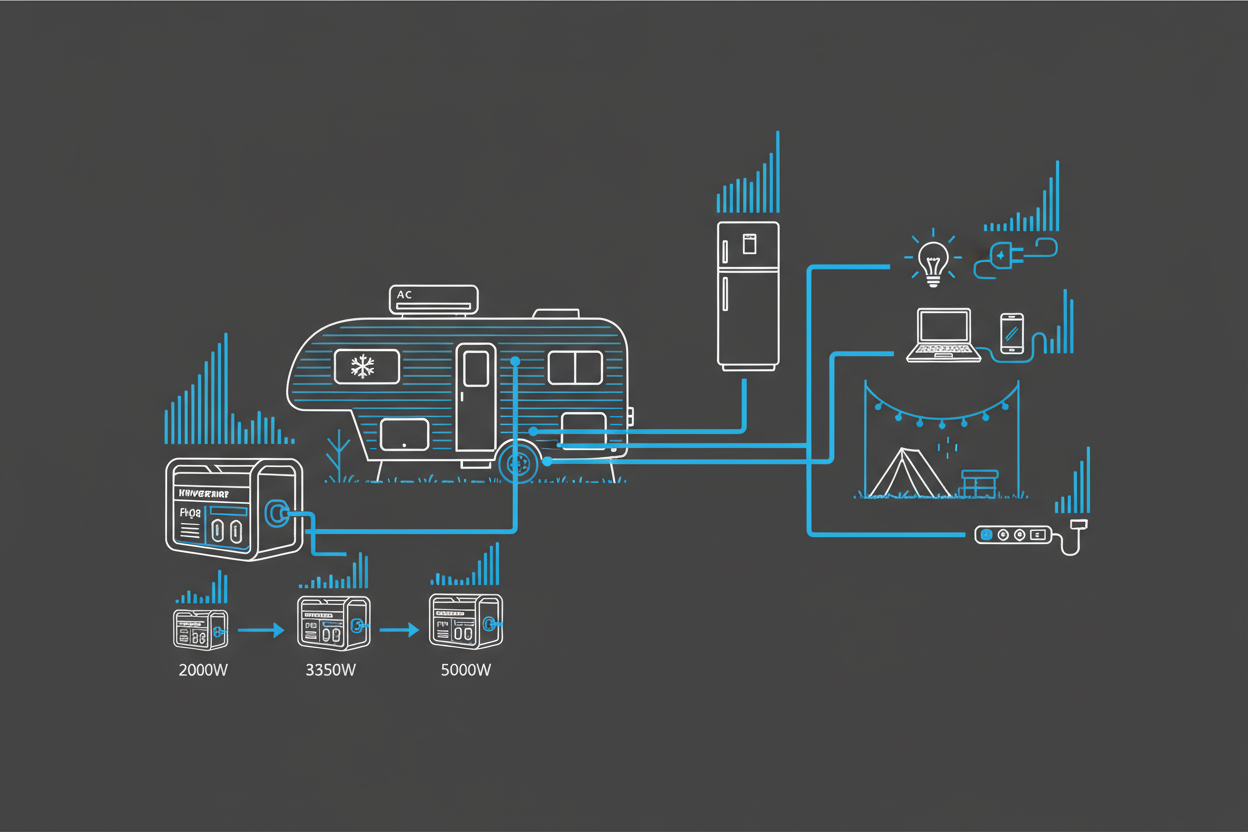
RV Generator Wattage Requirements: How Much Power Do You Really Need?

RV Generator Storage and Transport: How to Protect Your Equipment
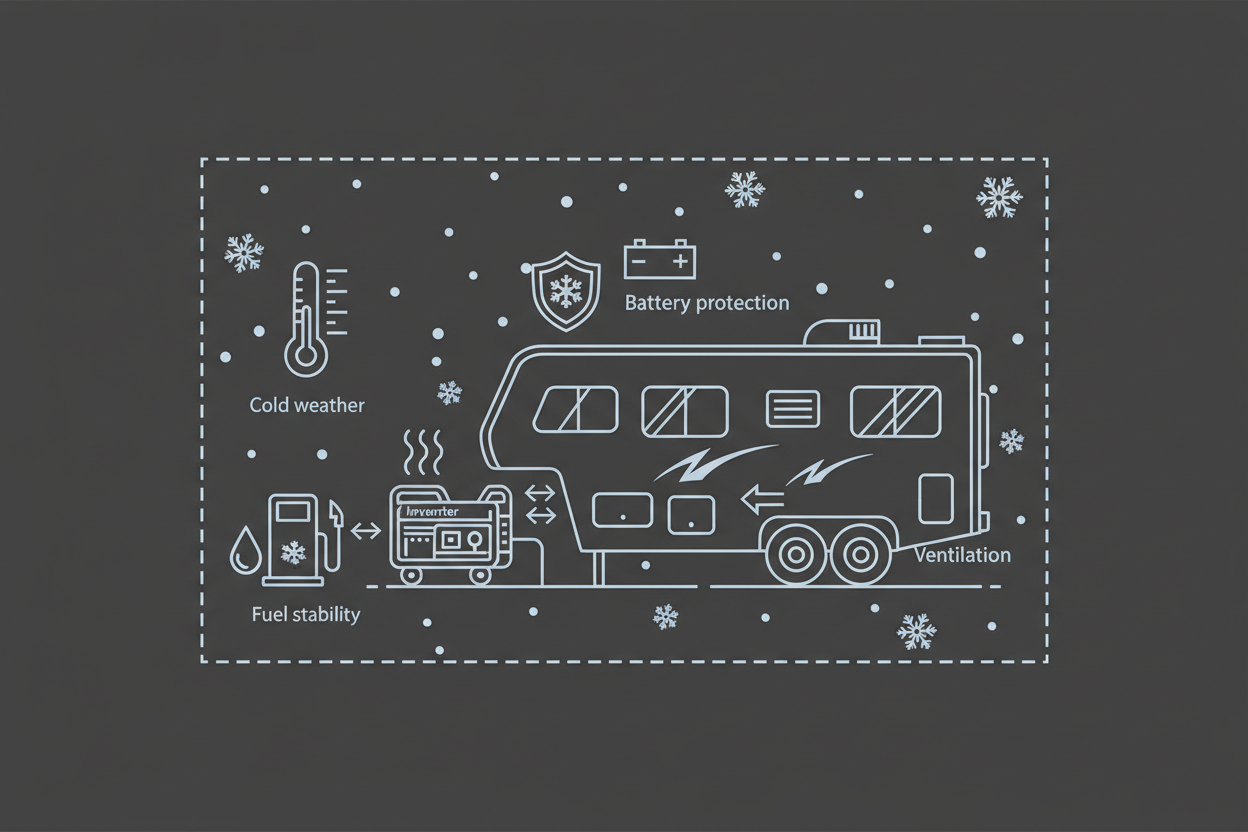
RV Generator Use in Winter: Cold Weather Operation & Preparation
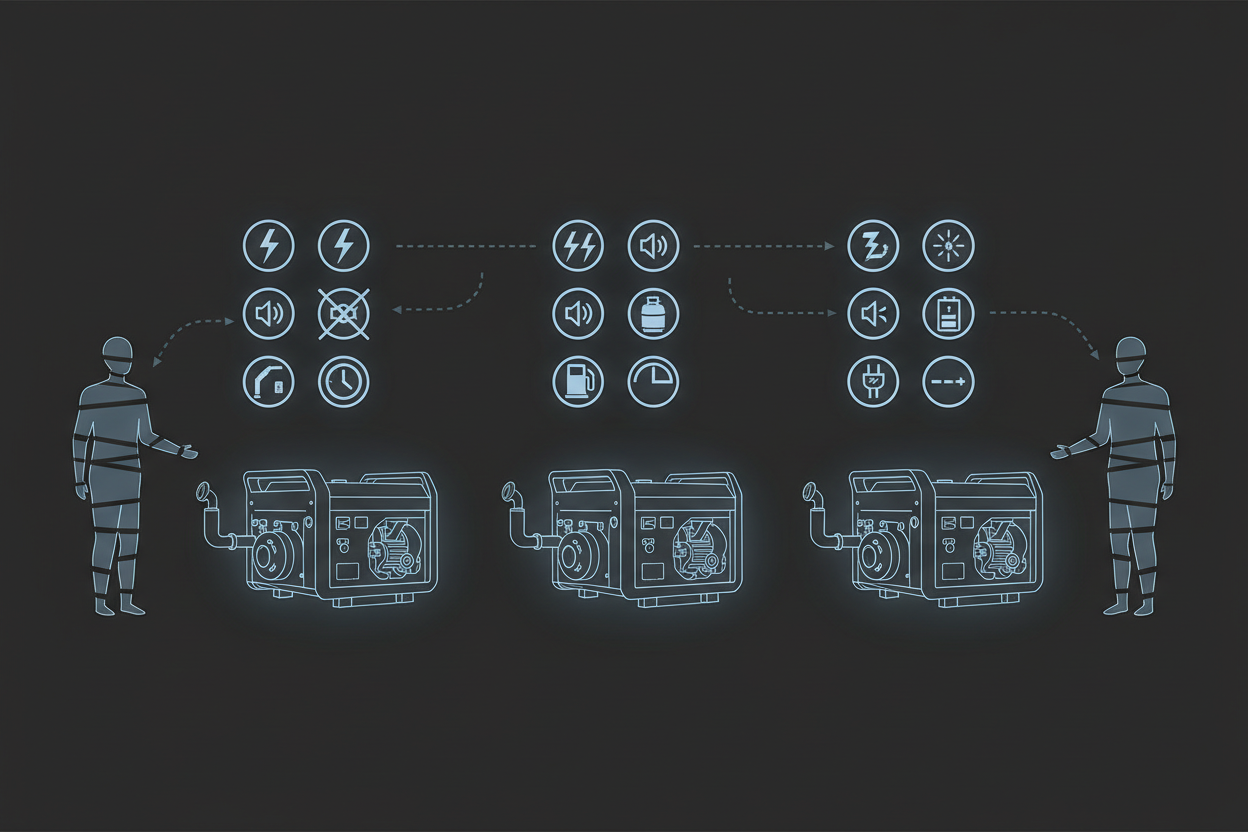
How to Choose the Right RV Generator: A Practical Buyer’s Guide

RV Generator Performance at High Elevation: What Changes Above 3,000 ft?

Running an RV Air Conditioner With a Generator: What You Need to Know
